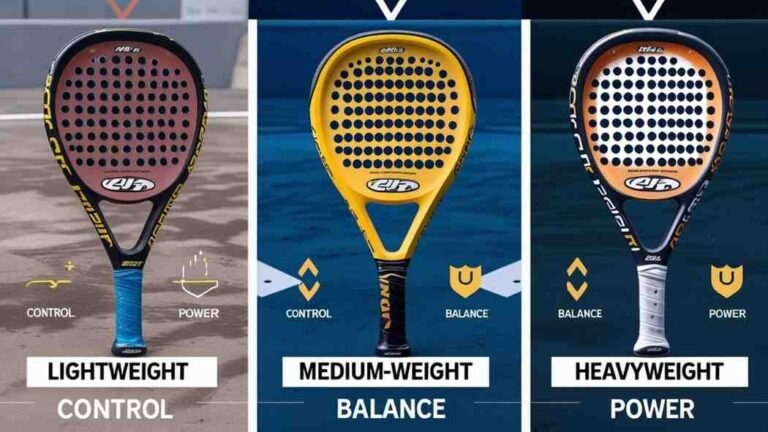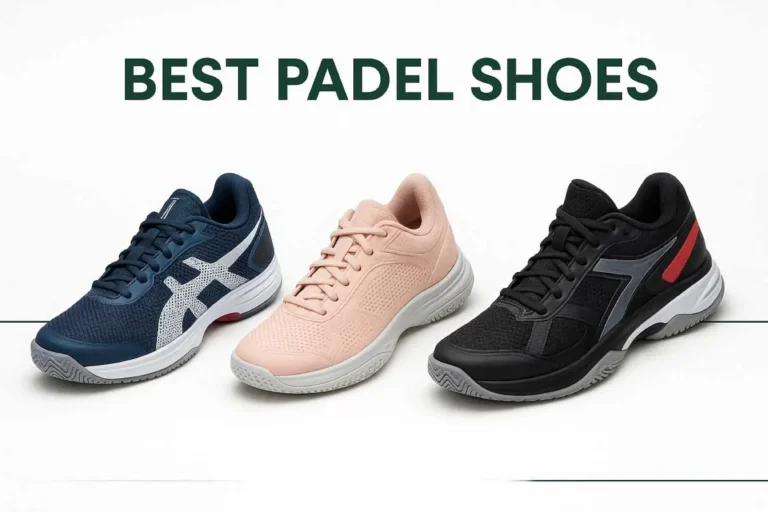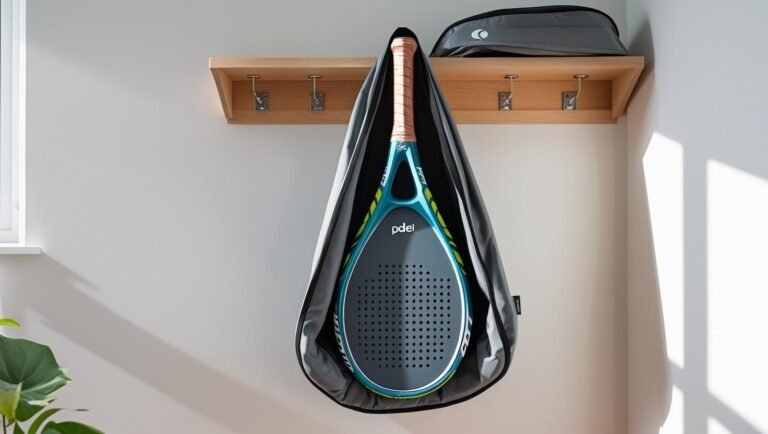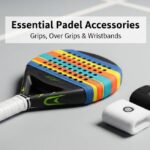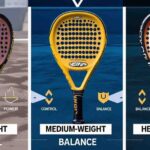Want a shortcut? Take a quiz and find your perfect Padel Racket in 30 secs.

Best Padel Rackets for Kids: Features to Look For (2026 Guide)
Choosing the best padel racket for kids in 2026 is about much more than just bright colours or cool designs — it’s about giving young players the right tools to succeed. When children use adult-sized rackets, they often struggle with poor swing mechanics, joint discomfort, and even long-term elbow or shoulder pain. These rackets are too heavy, too long, and too stiff for developing muscles and small hands.
That’s where junior padel rackets come in. Specially designed to be lighter, shorter, and easier to handle, these rackets help kids learn proper technique, gain confidence, and reduce the risk of injury. Choosing the correct padel racket for kids and juniors supports healthy development, builds better habits from the start, and increases the likelihood that your child will enjoy and stick with the sport long-term.
In this updated 2026 guide, we’ll walk you through everything parents and coaches need to know — from essential design features like weight, grip size, and material, to a list of the best padel rackets for kids and juniors currently on the market. Whether your child is just starting out or already competing, this article will help you make the safest and smartest choice.
Why Kids Need Junior Padel Rackets
Most elbow and shoulder pain in young padel players comes from using the wrong equipment — especially adult-sized rackets that aren’t made for growing bodies. These rackets tend to be heavier, longer, and harder to maneuver. For kids with smaller hands and less developed arm strength, this creates unnecessary strain on joints and muscles. Over time, it can lead to poor swing mechanics, discomfort, and even long-term injuries that could have been avoided.
That’s why choosing the best padel racket for kids and juniors is so important. Junior padel rackets are specifically designed to suit the physical needs of younger players. They’re lighter in weight (typically between 300–340g), shorter in length, and have thinner grips that fit comfortably in smaller hands. This makes them easier to control and allows kids to swing naturally, building proper technique from the start.
A junior padel racket also improves confidence and enjoyment. When a child feels in control of their racket, they’re more likely to focus on the game rather than struggle with discomfort or frustration. In short, investing in the right padel racket for kids and juniors doesn’t just protect against injury — it helps kids fall in love with the sport and stay active for years to come.
Key Features to Look for in Kids’ Padel Rackets
When choosing the best padel rackets for kids and juniors, it’s essential to focus on more than just the appearance or brand. Junior players have different physical needs than adults, and the right features can help them stay injury-free while developing proper technique and confidence on the court. Here’s what to look for:
1. Lightweight Design
Ideal weight: 300–340g
Kids need a lightweight padel racket to swing comfortably and safely. Heavy rackets put excess strain on the wrist and elbow, increasing the risk of injury. A lighter frame allows juniors to react quicker, maintain better control, and build correct form over time. Many of the top junior padel rackets fall within this weight range.
2. Shorter Length
Junior rackets are typically 3–5cm shorter than adult ones. This smaller frame improves manoeuvrability, making it easier for kids to learn proper swing mechanics. A compact racket also prevents them from overreaching and helps keep their body posture in check while hitting.
3. Smaller Grip Size
Comfortable grip = better control.
Young players have smaller hands, so a racket with a thinner grip is a must. A proper grip helps prevent excessive tension in the wrist and arm. Choosing the right handle size in your junior padel racket also improves accuracy and reduces fatigue during longer sessions.
4. Soft Core Material
Look for a soft EVA or foam core.
This is one of the most important features in any padel racket for children. Soft cores absorb impact and reduce vibration, which protects growing joints and lowers the risk of developing pain in the elbow or wrist. Rackets with softer cores also offer a more forgiving feel, making the game more enjoyable.
5. Durable, Safe Frame
The best padel rackets for juniors use fiberglass or composite materials that are both lightweight and durable. These frames provide enough flexibility to absorb shocks while being strong enough to withstand falls, bumps, and active use by young players.
By focusing on these key features, parents can confidently select a junior padel racket that supports safe play and helps young athletes thrive on the court. The right combination of weight, balance, core softness, and grip comfort makes all the difference in performance and injury prevention.
Best Age Ranges for Kids Rackets
Choosing the best padel rackets for kids and juniors starts with understanding age-specific needs. As children grow, their strength, coordination, and technique evolve, which means their junior padel racket must match their stage of development. Using the wrong racket size can lead to poor form, lack of confidence, and even early injuries. That’s why it’s crucial to pick from trusted, well-reviewed options — and in this guide, we’ve highlighted models selected from the 29 best padel rackets of 2026, ensuring your child gets the best combination of safety, comfort, and performance.
Here’s a breakdown of ideal padel racket sizes for children by age group:
1. Ages 5–8: Mini or Foam Rackets
At this early age, fun and safety come first. Kids between 5 and 8 years old should use mini padel rackets or foam rackets. These are extremely lightweight and easy to swing, helping children enjoy the game without putting stress on their wrists or shoulders. These rackets often feature soft materials and wide sweet spots to build hand-eye coordination safely.
Recommended Specs:
- Weight: 280–300g
- Length: 43–45 cm
- Grip: Extra small
- Core: Soft EVA or foam
2. Ages 9–11: Lightweight Junior Rackets
Children in this age group begin to play more structured games and need junior padel rackets with a little more stability and responsiveness. These rackets are still light but provide better power and control, helping young players improve consistency and accuracy.
Recommended Specs:
- Weight: 310–335g
- Length: 45–47 cm
- Grip: Small
- Core: Soft EVA
Padel rackets for kids aged 9–11 should offer comfort, shock absorption, and proper balance to avoid overloading young joints.
5 Best Padel Rackets for Kids (2026 Picks)
Wilson Ultra Pro V2Best for: Lightweight Transition Racket


Though designed for intermediate players, this racket’s lightweight feel and smooth playability make it an excellent choice for strong junior players looking to prepare for adult competition
Key Features
- Lite carbon fiber frame
- Even balance for control and speed
- Sleek, modern design
Nox VK10 Future 2024 Padel RacketBest for: Overall for Juniors
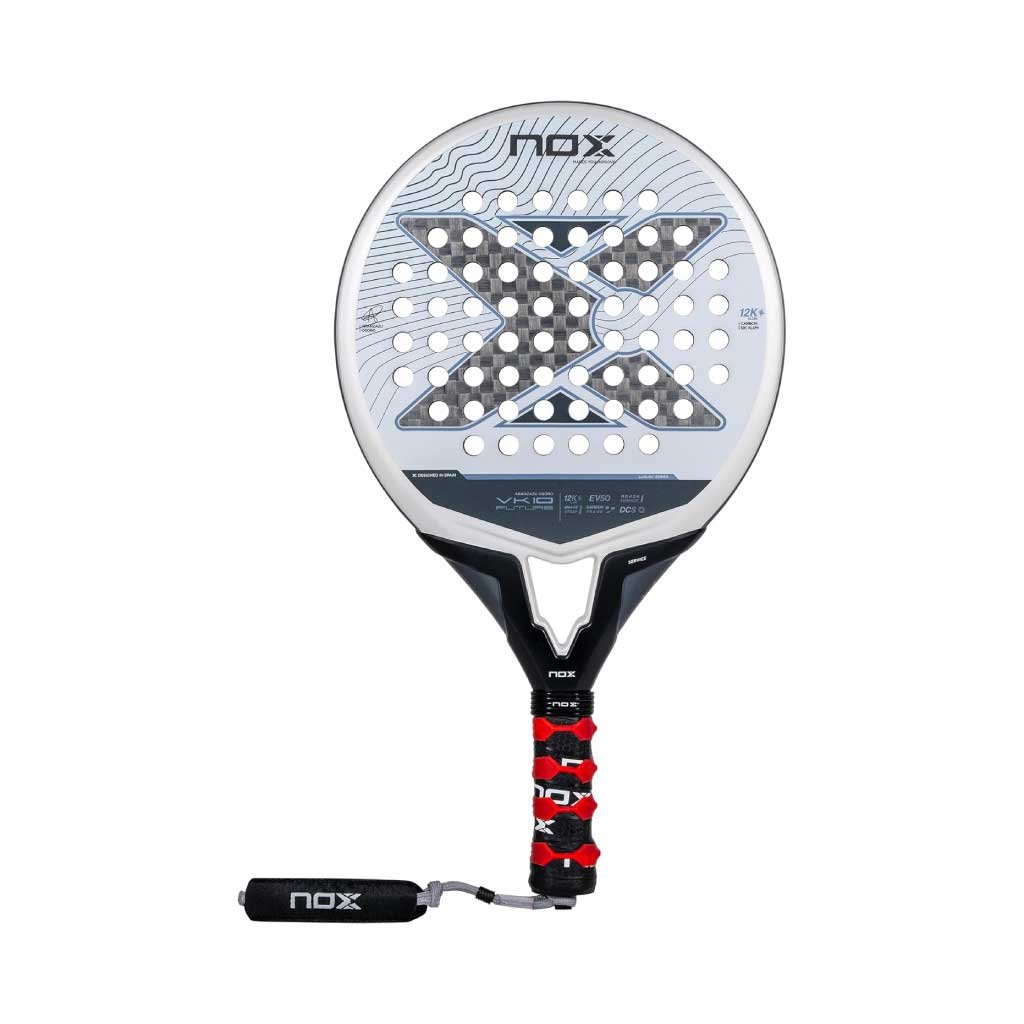

Designed with young players in mind, the Nox VK10 Future 2024 is lightweight and features a comfortable design. Its round shape and soft core make it easier to swing and reduce the risk of joint strain, perfect for developing proper form safely.
Key Features
- Round shape with soft HR3 core
- Comfortable grip and maneuverability
- Kid-friendly design backed by Nox junior ambassadors
Head Flash Pro 2023Best for: Beginner to Intermediate Kids

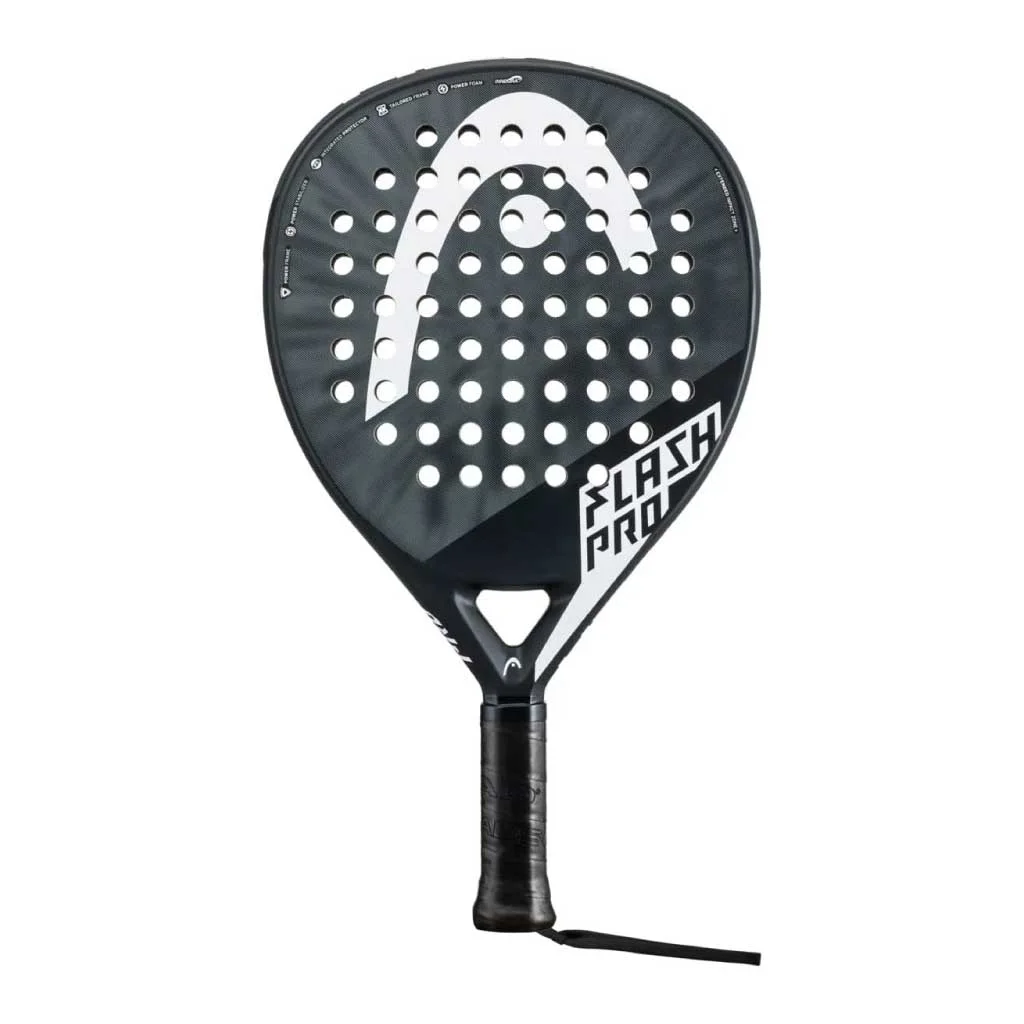
This versatile racket is ideal for older juniors who are ready to elevate their game. It offers a good mix of control and spin with a forgiving surface.
Key Features
- Power Foam for comfort
- Innegra tech for shock absorption
- Slightly larger sweet spot
Babolat Counter Veron Padel Best for: Defensive Junior Players

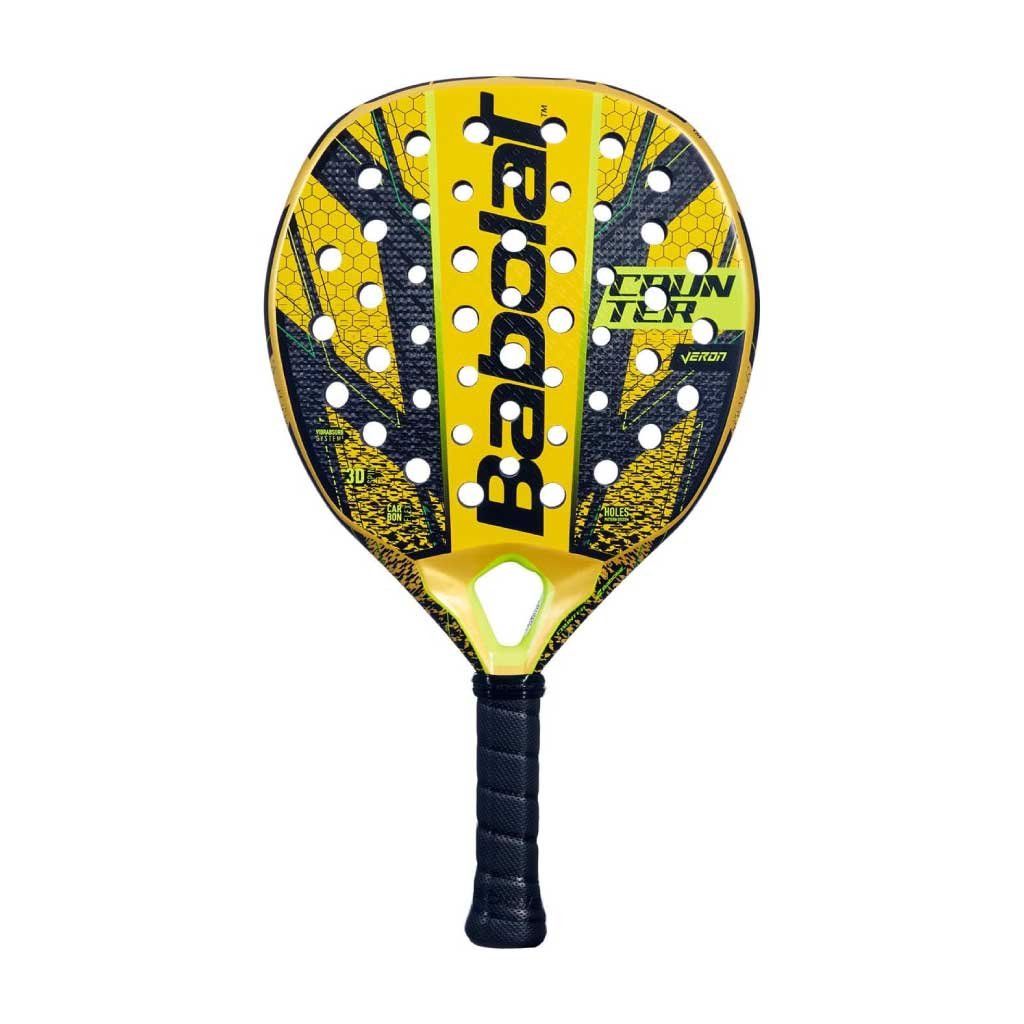
If your child prefers control and strategic shots, this racket helps them stay in the game longer. It features Babolat’s signature comfort and a soft EVA core.
Key Features
- Dynamic stability system
- Lightweight and forgiving
- Fiberglass surface for soft touch
Adidas Drive 3.3 Padel RacketBest for: Budget-Friendly Junior Option


For younger or new players, the Adidas Drive 3.3 is both affordable and built for comfort. It features a lightweight frame and soft materials, making it easy to play with straight out of the box.
Key Features
- Fiber Glass surface
- Soft Performance EVA core
- Large, sweet spot
Ready for More?
- Best Nox Padel Rackets
- Nox vs Wilson: Which Padel Racket Brand is Better?
- Best Padel Rackets for Spin and Control
- Why Do Padel Rackets Have Holes
- Head vs Nox: Which Padel Racket Brand is Best for You?
- Why Do Some Padel Rackets Cause Elbow Pain
- Best Junior Padel Rackets for Young Players
- Best carbon fiber padel rackets
- Best Padel Shoes for top players
How to Choose the Right Kids’ Racket
Choosing the right padel racket for kids and juniors isn’t just about appearance — it’s about safety, comfort, and development. A properly matched racket helps young players avoid injuries and develop good habits from day one.
1. Match the Racket to Age and Strength
Children grow at different rates, so it’s essential to choose a junior padel racket that fits their age, size, and playing ability.
- Ages 5–8 need ultra-light mini or foam rackets
- Ages 9–11 benefit from lightweight rackets with soft cores
- Ages 12–14 can often handle transitional rackets, which are lighter adult models
- Look for rackets in the 300–340g range, depending on strength and coordination.
2. Prioritize Comfort & Grip Size
Young hands need thinner handles. Choose a grip that your child can hold comfortably without squeezing too hard. A thicker grip can cause wrist or elbow strain, especially during longer matches.
Many brands offer junior-specific grips or allow you to adjust with overgrips.
3. Focus on Soft Core and Vibration Control
Rackets with a soft EVA or foam core are crucial for protecting joints. Kids’ muscles and tendons are still developing, so a racket that absorbs impact helps prevent elbow and shoulder pain.
Look for built-in vibration-dampening technology or low-density foam materials.
4. Choose Low Balance & Maneuverability
Kids need rackets that are easy to swing and control. A low or even balance makes it easier for juniors to develop smooth stroke mechanics without overloading their arms.
5. Don’t Buy Based on Colour or Brand Alone
It’s tempting to pick a racket just because your child likes the look — but comfort and fit should come first. A flashy racket that’s too heavy or stiff can lead to injuries and frustration.
Pro Tip: If possible, let your child hold and test the racket before making a purchase. Comfort and feel are just as crucial as specs.
Conclusion
Choosing the right padel racket for kids and juniors is one of the most important steps in helping them enjoy the game safely. A racket that’s too big, too heavy, or too hard can lead to elbow or shoulder pain — and that’s the fastest way to make a young player quit.
Instead, focus on lightweight rackets that have a soft core and are built with kids’ sizes and safety in mind. These features enhance comfort, minimize injury risk, and enable young players to learn proper technique from the outset.
The best part? When kids feel confident with their gear, they play better, smile more, and fall in love with padel even faster.
Before you buy, check the size and weight according to the age. Let your child test the swing if you can. And don’t choose based on looks alone — comfort and fit matter most.
Need help picking the right racket? Head over to our full list of the [Best Padel Rackets for Kids & Juniors in 2026] to find one that fits your child perfectly.
Ready for More? You’ll Love This Insight
- How to Choose the Right Padel Racket
- Best Babolat Padel Rackets
- Head vs Babolat: Which Padel Racket Brand is Better?
- Best Padel Rackets for Women
- Best Padel Rackets for Men
- Nox vs Adidas – Which Padel Racket Brand is Right for You in 2026?
- The Difference Between Fibreglass and Carbon Padel Rackets
- How to Replace the Grip on a Padel Racket
- Can You Use a Tennis Racket for Padel?
- Head vs Wilson: Which Padel Racket Brand is Better in 2026?
- Best Padel Racket Accessories
- Head vs Adidas: Which Padel Racket Brand is Best for You?
- Adidas vs Wilson: Which Padel Racket Brand is Better?
- The Evolution of Padel Rackets Over the Years
- Nox vs Babolat: Which Padel Racket Brand is Better in 2026?
- Best Padel Rackets for Professional Players
FAQs
The best size depends on your child’s age and height. Kids aged 5–8 should use mini or foam rackets. Ages 9–11 do better with shorter, lightweight junior rackets. Ages 12–14 can start using transitional models closer to adult size, but still lighter and easier to handle.
No. Adult padel rackets are too heavy and long for kids, which can lead to poor form and elbow or shoulder pain. Children need gear designed for their size and strength to learn proper technique and prevent injury.
If your child is between 12 and 14 years old, plays regularly, and is getting stronger, it might be time for a transition racket. Look for signs like better control, longer reach, and comfort with a heavier swing before upgrading to an adult-size model.
The ideal weight for a junior padel racket is between 300g and 340g. This makes it easy to swing without tiring the arm or stressing growing joints. Anything heavier can lead to poor technique and discomfort.
Yes. Many high-quality junior rackets feature soft EVA cores or built-in vibration damping. This helps reduce the impact on the arm, lowers the risk of injury, and provides kids with a more comfortable playing experience.
